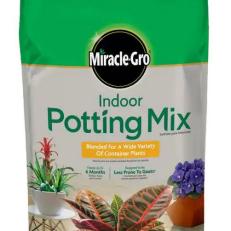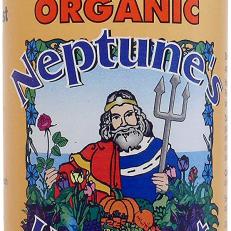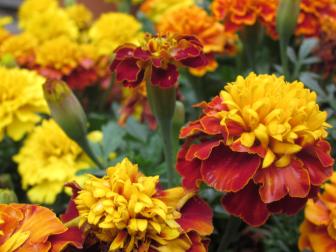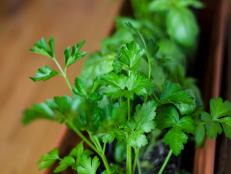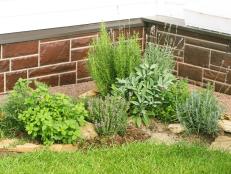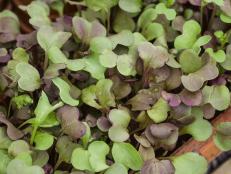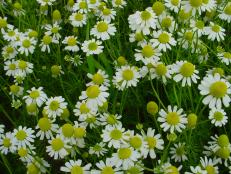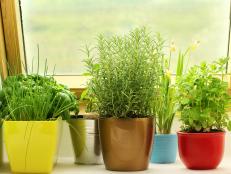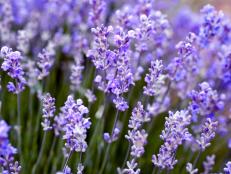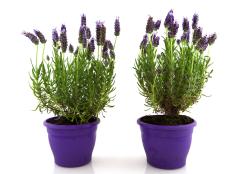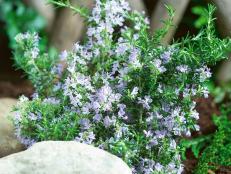Grow Your Own Lemongrass
Love lemon? Try your hand at growing lemongrass.
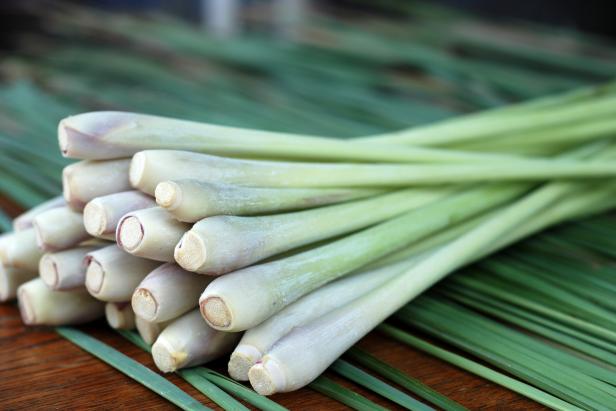
Shutterstock/P-fotography
Lemongrass can be used in savory dishes and adds a strong vertical element to planting beds.
When it comes to citrusy herbs, it’s tough to beat lemongrass. This easy-growing herb is a citrus powerhouse, serving a lemony explosion that’s tasty in stir fries, savory dishes, sweet treats and flavorful sauces. It’s a staple in Asian cuisine and makes a knock-your-socks-off cup of tea. What’s not to love?
Best of all, you really don’t need a green thumb for growing lemongrass. With minimal care, lemongrass delivers a hearty harvest that’s even easy to preserve (no tricky canning needed!). If you like to use fresh lemon flavors in your cooking, learn what you need to know about caring for lemongrass.
Lemongrass Basics
Lemongrass is a tropical herb that's perennial only in Zones 8 and warmer. In other regions, grow lemongrass as an annual or in containers that you overwinter indoors (more on that below). Lemongrass grows quickly and spreads to fill a planting bed or pot. Expect a plant to reach a size of 3 to 5 feet tall and up to 2 feet wide in a growing season. Look for lemongrass plants for sale in the herbs section of any garden center. Don’t be afraid to start with a small pot. Lemongrass is a fast grower — you’ll have a nice clump by midsummer in most regions.
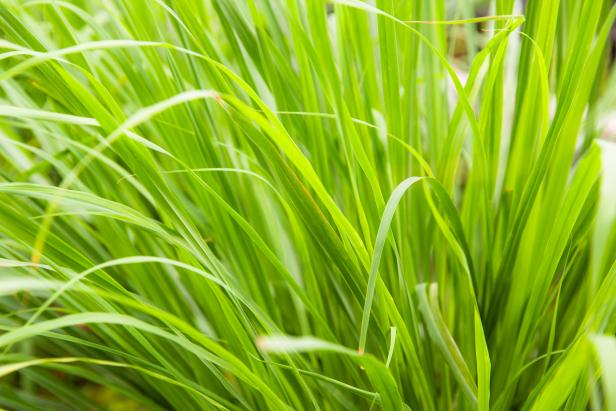
Shutterstock/Pushish Images
Lemongrass is a fast grower in garden spots that get full sun.
Growing Lemongrass
Tips for Planting Lemongrass
Give this tropical herb a spot in full sun, even in Southern gardens. Amend clay soil heavily with compost or rotted manure to improve its ability to drain.
Fill pots with a quick-draining standard potting mix made for containers. Something enriched with peat moss, fir bark or coir offers the ideal texture for roots to thrive.
Lemongrass grows best with abundant moisture but avoid constantly soggy soil. Plants in containers need watered more frequently than in-ground plantings. In the heat of late summer, lemongrass in pots usually need daily watering. Add a water-catching saucer beneath containers to capture irrigation runoff and provide a reservoir for roots to draw from. Feed lemongrass plants monthly throughout the growing season using fish emulsion or a standard 20-20-20 plant food.
Growing Lemongrass in Pots

Shutterstock/Travel_Master
Growing lemongrass in a pot? Choose a large container as lemongrass roots will likely break a small pot as the roots bulk up and spread out.
To grow lemongrass in pots, choose a 5-gallon or larger container (minimum 14 inches across). Use too small a pot, and lemongrass roots will likely break it. With ample water and fertilizer, these roots bulk up and spread out.
Fill pots with a commercial potting mix designed for use in containers. Tuck small lemongrass plants into soil and water well. When growing lemongrass in pots, once plants achieve some height, containers can become top heavy. Place pots of lemongrass in a slightly protected location where winds won’t easily topple containers.
Ornamental Grasses for Every Situation
Choose the ornamental grass based on the season, the height and the type of soil.
Lemongrass in Landscaping
In the landscape, treat lemongrass like an ornamental grass. Use it to create an informal screen — in pots or beds. In planting beds, space plants 18 to 24 inches apart. Lemongrass creates a nice edging for a path or driveway; just be sure to position plants so they have ample room to spread. Or draft lemongrass to add a strong vertical element to planting beds.
Some gardeners like to plant lemongrass near outside seating for its citrusy fragrance when plants are brushed. In an herb garden, lemongrass can easily play a central role as a vertical element surrounded by drifts of other sun-loving herbs, including Thai basils (lemon or purple), garlic chives, shallots, mint and cilantro. Add a kaffir lime in a pot, and you have the makings for some tasty Asian dishes.
Buy Growing Supplies
What to Do With Lemongrass in Winter
In cold zones, dig a few stalks of in-ground lemongrass and pot up to grow indoors through winter. Remove leafy tops, leaving 5 to 6 inches above the stalk base. Plant in a container and place in a south-facing window or under grow lights to encourage growth through winter. Leaves will likely grow just a few inches but you can harvest the fresh flavor.
For lemongrass in pots, carry containers indoors to grow and harvest through winter. Or place your plant in a cool, dark place for winter and let it go dormant. Cut off any brown leaf tops. Water occasionally — just enough to keep the roots alive. In spring, move pots to a sunny spot and water well. Watch for new sprouts to peek through the clump. When they’re clearly visible, begin watering plants regularly and fertilize when shoots are a few inches tall.
Lemongrass Pests and Problems
Lemongrass is typically pest-free. Occasionally a plant may become infested with spider mites. This usually occurs on indoor plants that are actively growing. The best solution is to spray plants with insecticidal soap, which is safe for human consumption (rinse leaves first).
Lemongrass leaf edges are sharp and can deliver paper cut-type injuries. Use caution when working around plants.
Dividing Lemongrass
One problem with lemongrass is that it forms really tight clumps, which makes digging stems for harvest or dividing plants difficult. To harvest stems for kitchen use, work from the outer edge of the clump. To divide lemongrass clumps, cut into the clump with a hatchet or very sharp spade. In warm regions, the best time to divide perennial lemongrass is in early spring. In areas where lemongrass isn’t winter hardy, divide clumps in fall, lifting and planting into pots for overwintering.
Harvesting Lemongrass
Lemon flavor abounds in lemongrass leaves and the bulbous stem bases. Clip leaves and bundle together to add a lemony twist to soups, stews or teas. Harvest individual stems after leaves are about a foot tall. At this point, stem bases should be at least one-half-inch thick. Either cut stalks at soil level or pull the entire stalk. What you want to get is something that resembles a green onion or scallion.
The part of the stalk that’s edible is near the base. Cut off the grassy top and make a second cut where the white stem base starts to turn green. Chop off the bottom of the stem. Working with the white lower portion of the stem, peel away outer fibrous layers around the stalk base. You might need to smash the base of the stem with the flat blade of a knife (similar to how you might handle garlic cloves). Beneath the outer layers is a white layer that has the consistency of soft butter. This is the part you want to consume. Slice this section, then chop and finely mince it before adding it to dishes. Alternatively, pound it into a paste with a mortar and pestle, grind it in a food processor or grate it.
How to Use Lemongrass
The natural oils of lemongrass introduce intense flavor and complexity to dishes. In the kitchen, lemongrass stars in Asian cuisine, especially in Cambodian, Vietnamese and Thai cooking. Add the tender stalk base to curry paste, stir fries and sauces. You can also drop lemongrass pieces into soup. Lemongrass works beautifully in marinades for slow-roasted meat. It’s a great addition to homemade ice cream or lemon bars for a burst of citrusy flavor.
The green portion of the stem is inedible but packed with lemony oils. To use it, smash the stem with a knife to release oils or simply bend it back and forth a few times. Tuck whole stems into roasts or poultry to infuse flavor or toss into simmering liquid for meats or vegetables. Remove stems before serving.
Steep leaves and pieces of the stalk base in hot water for a lemony brew. Around the world, lemongrass tea is prized for its immune-boosting benefits. It’s believed to help relieve asthma, gastrointestinal distress and fever. Always remove whole lemongrass leaves before serving.
20 Mosquito-Repelling Plants 20 Photos
Looking for a way to rid your garden and outdoor space of mosquitoes without using chemical mosquito repellents or a bug zapper? Outsmart mosquitoes by using plants that repel or confuse them.
Does Lemongrass Keep Bugs Away?
Citronella oil is extracted from various species of lemongrass, which is why the plant is reported to have insect repelling properties. Scientific studies support this claim, but the results do not demonstrate overwhelming effectiveness. Citronella-based insect repellents need to be reapplied frequently and don’t usually provide as thorough control as DEET, for instance.
To use lemongrass as a repellent, soak bruised leaves in distilled water and spray or dab on your skin. Alternatively, just rub crushed leaves on skin. Reapply frequently.
Preserving Lemongrass
Fresh lemongrass stems store a few weeks in the fridge when wrapped loosely in a towel. You can also easily preserve lemongrass. Dry leaves by bundling them and hanging them upside down in a dark place until dry. Store in tightly sealed jars. Use leaves whole so you can remove them from dishes before consuming. Typically dried leaves retain best flavor up to a year.
Freeze whole stalks of lemongrass or freeze pieces of the edible inner stem base in a single layer on a baking sheet, then transfer to a zipper bag. Freeze in a single layer so you can break off the amount you need for recipes. Another method is to freeze minced lemongrass or purée it. Freeze in zipper bags in a thin layer and use the break-off method.









